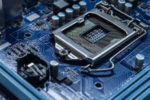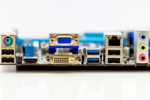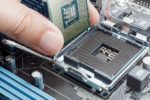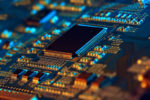How To Remove GPU From Motherboard the Right Way

Upgrading GPU is common for many builders and gamers, especially if the games require the latest video card capabilities to run smoothly.
If you desire to learn how to remove GPU from motherboards, you're in luck.
This task isn't too technical or time-consuming because you're not entirely rebuilding a computer.
With some knowledge and preparation, you can do this by yourself without consulting an IT tech or someone who has experience in building computers.
What To Do Before You Start
There are a couple of actions you need to take before removing your GPU for good.
ALSO READ: How to Replace a Motherboard
Uninstall Driver
The most crucial part of preparing to remove the hardware is to uninstall the current video card drivers.
Failure to do so may affect your display once you replace the GPU.
Prepare the Tools
When installing and removing any internal PC components, having a set of screwdrivers will only make the job easier.
If you're replacing your current GPU, make sure the drivers are readily accessible, whether stored in a disc, flash drive, or online.
Not all builders use an ESD or anti-static wrist strap, but it wouldn't hurt to wear one while touching the metal part of your internal components.
This accessory prevents the accumulation of static electricity, leading to static discharge on yourself and damages on the parts.
Unplug the Connectors
Whenever you install new hardware into the internal part of your desktop system, it is essential to remove all connections from it.
You'll save a lot of hassle, and it is significantly safer to work on the components.
How To Remove GPU From Motherboards
Once you have the tools and made the necessary adjustments, you're ready to remove your current graphics card.
1. Open Your PC Case
Your case must be open to start with the process.
Opening the case is always done by removing the side panel.
The side panel is usually held by a few thumbscrews or clamps, which are ordinarily removable without using any tools.
However, if your case uses regular screws, you have to use the dedicated screwdriver to lose them.
The graphics card is commonly found in the lower part, in a PCI slot on the motherboard.
It's pretty hard to miss, especially if you are the one who removed the wires on the back of your CPU.
2. Remove the GPU
Graphics cards are typically connected to the motherboard via a PCI-e slot.
If your GPU is not too outdated, chances are it is held tightly by a screw that secures the graphics card's exterior metal panel to the case itself.
This setup allows the graphics card not to rely on the PCI-e slot for support.
3. Loosen the Screw
Once you confirm the location of your GPU, loosen the screw you see outside of the case.
There is a chance that the screws outside the casing are hidden beneath a plastic panel.
Thus, always make sure you have monitored all the pertinent parts.
You'll notice that once you have completely removed the screw, the firmness of the GPU to the MoBo decreases, making it easier to remove.
4. Press the Clip
Graphic cards nowadays are usually designed with either 6-pin or 8-pin ports.
At the top of the connector, you'll most likely notice small clips that are responsible for locking the connection.
Before you proceed with the power cord removal, make sure your card isn't attached to anything else.
Once you have pin-pointed the clip, start pushing it firmly with your thumb and slowly remove the wire connectors out.
5. Push Down the Release Tab
The graphics card is secured in the PCI-e slot by a release tab.
The final step before completely disconnecting your graphics card is to push down this tab found at the end of the PCI-e slot.
If you didn't access the tab with your finger, the easiest thing to do is use a non-conductive object that you can hold with your two fingers.
Using one hand, hold the GPU and softly press down on the tab with the help of an object using the other hand until you sense a click.
Afterward, slowly remove the graphics card away from the motherboard while still pressing the tab.
At this point, you should be able to take the GPU out of the case safely.
Do not rush to pull it out, and always handle it with utmost care.
For any reason, you shouldn't forcibly remove the video card because you might damage it.
This action could lead to damages to the GPU itself as well as the PCI-e slot.
How To Install GPU
If your reason for removing your graphics card is to replace it with a new one, this process should be significantly easier.
You can now connect your new graphics card in the open and unobstructed PCI-e slot.
Insert the card tightly into the slot, then press down the plastic clamp on the PCI-E slot's end to secure it.
After that, mount the GPU's metal bracket to your PC's case with a screw.
You can reuse the screw that held the cover bracket on your previous GPU if it fits perfectly.
Driver for the New Video Card
Ensure you have the corresponding driver for your new video card since you have to install it as soon as your next boot-up.
This procedure is straightforward if your new graphics card is of the same brand as your old one.
Simply visit the manufacturer's website to acquire the most recent driver package that matches your GPU model for your Windows OS.
If not the same brand and you forgot to uninstall before removing the old GPU, you have to do it this time.
Uninstall the old driver, then download or run the installation disc to install the driver for the new video card.
RELATED: How To Remove the CPU From a Motherboard (Guide)
Final Thoughts
Knowing how to remove GPU from motherboards is necessary, especially if you want to be more knowledgeable in PC building.
Anyhow, if you don't know what to do with your recently-removed GPU, you can sell or give it to a friend.




